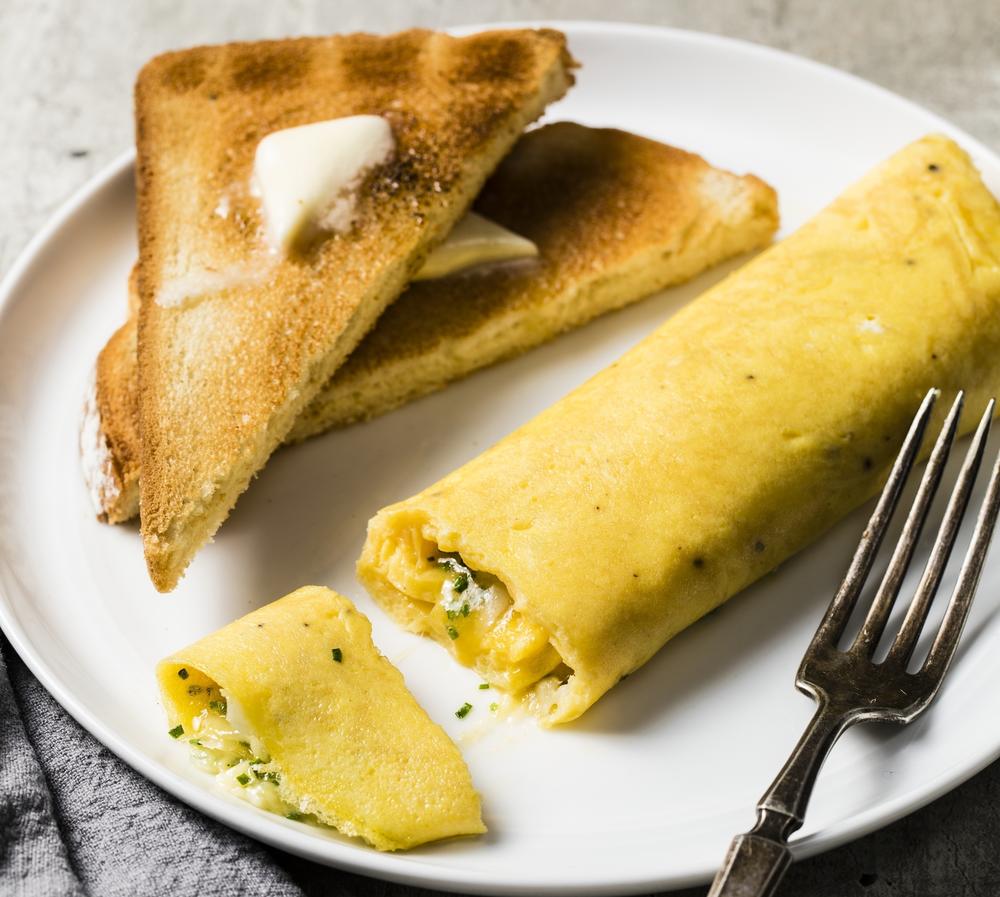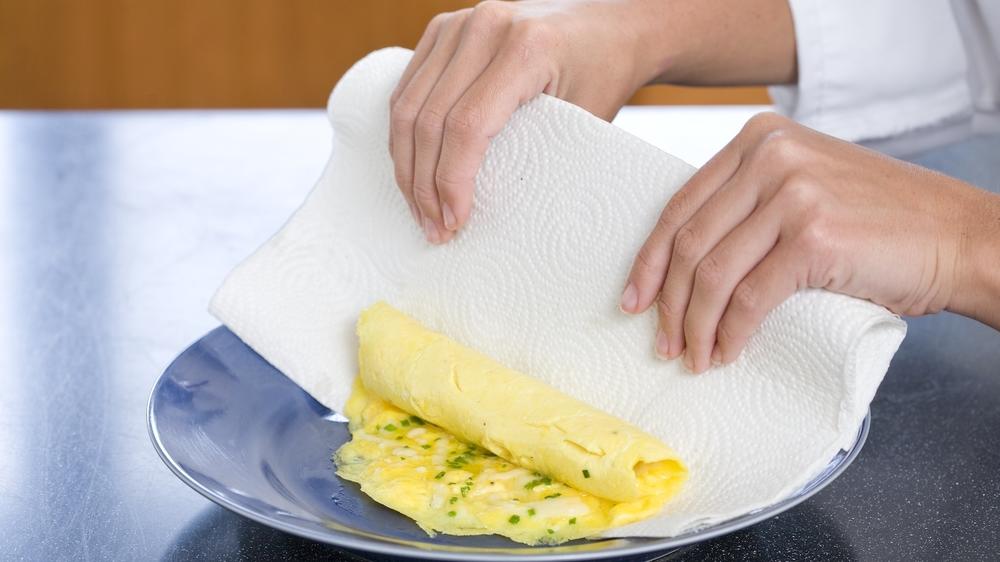Section Branding
Header Content
For Mother's Day, Roll Up A French-Style Omelet As A Way To Say 'I Love You'
Primary Content
Are you thinking a regular omelet isn't quite good enough for mom on Mother's Day? Then on Sunday, give this a shot: a French-style omelet that's elegant in both presentation and taste.
"I love making a super tender, super creamy, French-style omelet as a nice way of saying 'Mom, Happy Mother's Day. I love you," says Jack Bishop of America's Test Kitchen.
Unlike its diner-style counterpart, these are rolled, not folded, and include very little filling like vegetables and meats. [Watch this video to see that rolling technique.]
"If you think about a diner omelet, it's mostly about the goodies inside the eggs," he says. "Eggs and the butter are in the forefront here."
It starts with two whole eggs plus one yolk, beaten with a fork about 80 times. Yep, America's Test Kitchen has counted the number of times eggs should be beaten to get perfectly blended.
Read on for tips before you start, or jump ahead to the recipe:
Cut the butter into small pieces and then pop them in the freezer for about 10 minutes. "The science here is that a lot of omelets add either cream or they add half and half in order to promote creaminess," Bishop says. "Butter does an even better job because it can be frozen quickly and so it melts really evenly, coating the egg proteins in a way that keeps it tender."
Use chopsticks or skewers to stir the eggs while cooking. If you don't have either, use the handle of a wooden spoon.
Ideally, use a skillet with angled sides. Straight sides may prove problematic when it's time to try to slip your creation out of the pan. [Click on the audio to find out whether Noel King's straight-sided cast iron pan helped or hurt.]
Perfect French Omelets
Serves 2
Ingredients
2 tablespoons unsalted butter, cut into 2 pieces
½ teaspoon vegetable oil
6 large eggs, chilled
Salt and pepper
2 tablespoons shredded Gruyère cheese
4 teaspoons minced fresh chives
Instructions
1. Adjust oven rack to middle position and heat oven to 200 degrees. Place 2 heatproof plates on rack.
2. Cut 1 tablespoon butter in half. Cut remaining 1 tablespoon butter into small pieces, transfer to small bowl, and place in freezer while preparing eggs and skillet, at least 10 minutes.
3. Meanwhile, heat oil in 8-inch nonstick skillet over low heat for 10 minutes. Crack 2 eggs into medium bowl and separate third egg; add egg yolk to bowl and discard white. Add ⅛ teaspoon salt and pinch pepper. Break egg yolks with fork, then use fork to beat eggs at moderate pace, about 80 strokes, until yolks and whites are well combined. Stir in half of frozen butter cubes.
4. When skillet is fully heated, use paper towels to wipe out oil, leaving thin film on bottom and sides of skillet. Melt ½ tablespoon reserved butter in skillet, swirling butter to coat. Add egg mixture and increase heat to medium-high. Use 2 chopsticks or wooden skewers to scramble eggs, using quick circular motion to move around skillet, scraping cooked egg from side of skillet as you go, until eggs are almost cooked but still slightly runny, 45 to 90 seconds. Turn off heat (remove skillet from heat if using electric burner) and smooth eggs into even layer using heat-resistant rubber spatula. Sprinkle omelet with 1 tablespoon Gruyère and 2 teaspoons chives. Cover skillet with tight-fitting lid and let sit for 1 minute for runnier omelet or 2 minutes for firmer omelet.
5. Heat skillet over low heat for 20 seconds, uncover, and, using rubber spatula, loosen edges of omelet from skillet. Place folded paper towel onto warmed plate and slide omelet out of skillet onto paper towel so that omelet lies flat on plate and hangs about 1 inch off paper towel. Using paper towel, roll omelet into neat cylinder and set aside. Return skillet to low heat and heat for 2 minutes before repeating instructions for second omelet, starting with step 3.
Recipe reprinted by permission of America's Test Kitchen.
Copyright 2021 NPR. To see more, visit https://www.npr.org.


